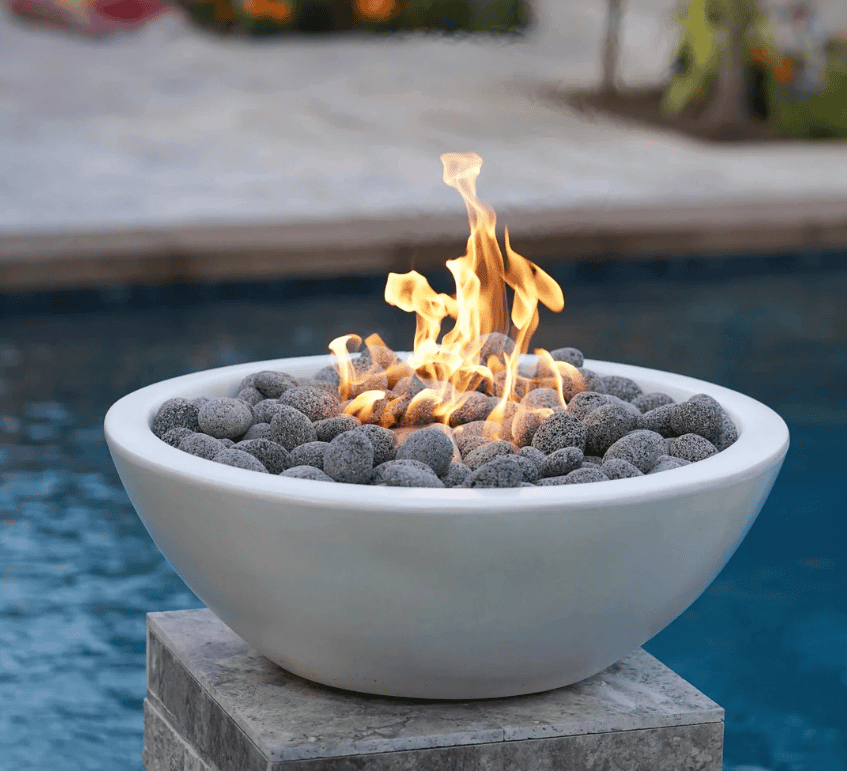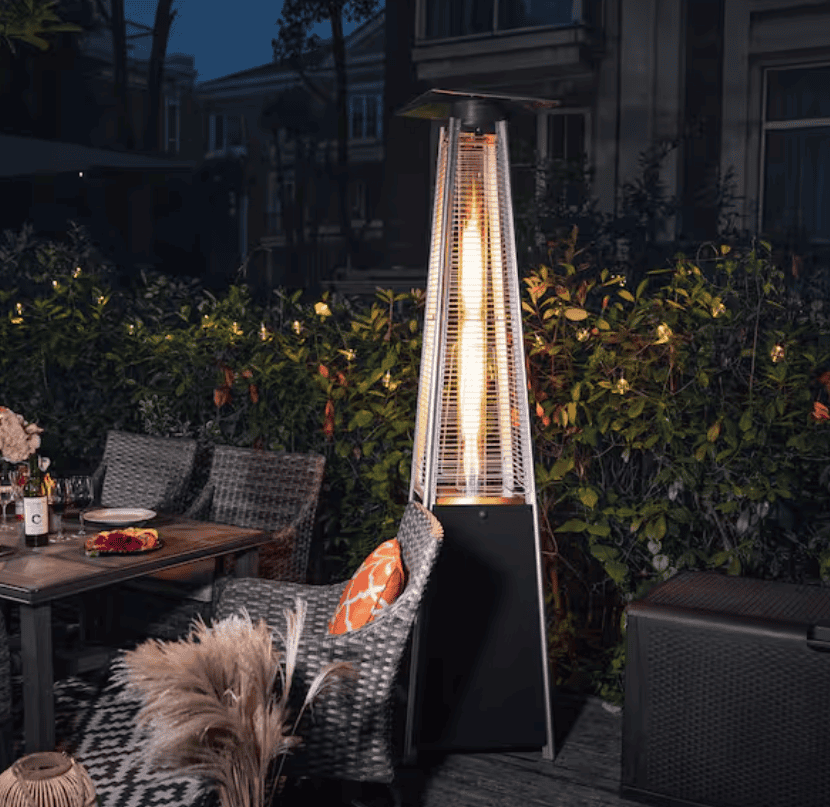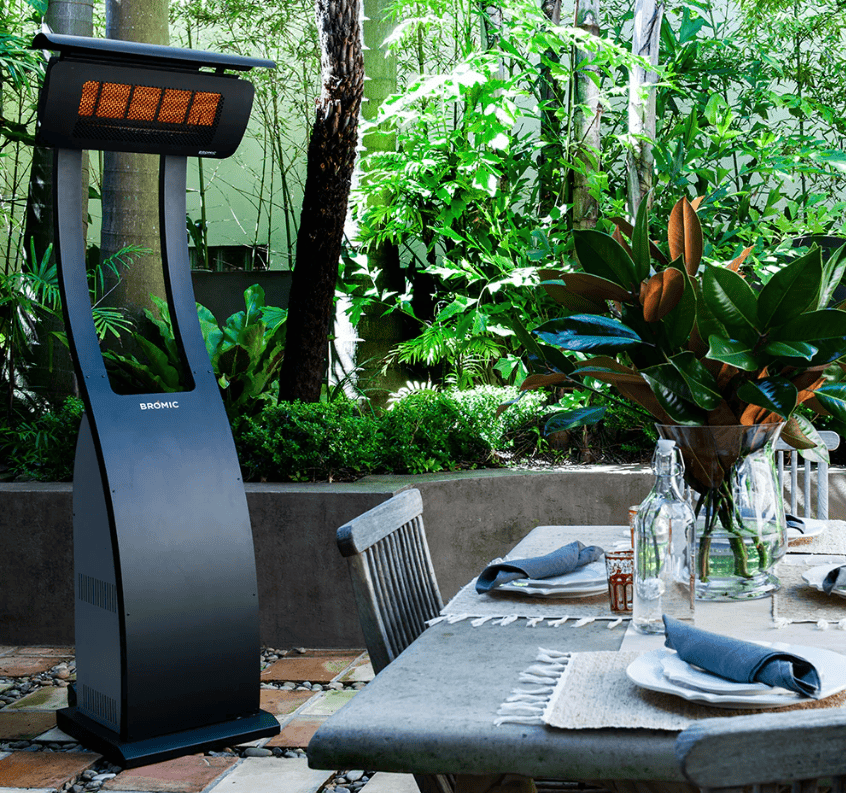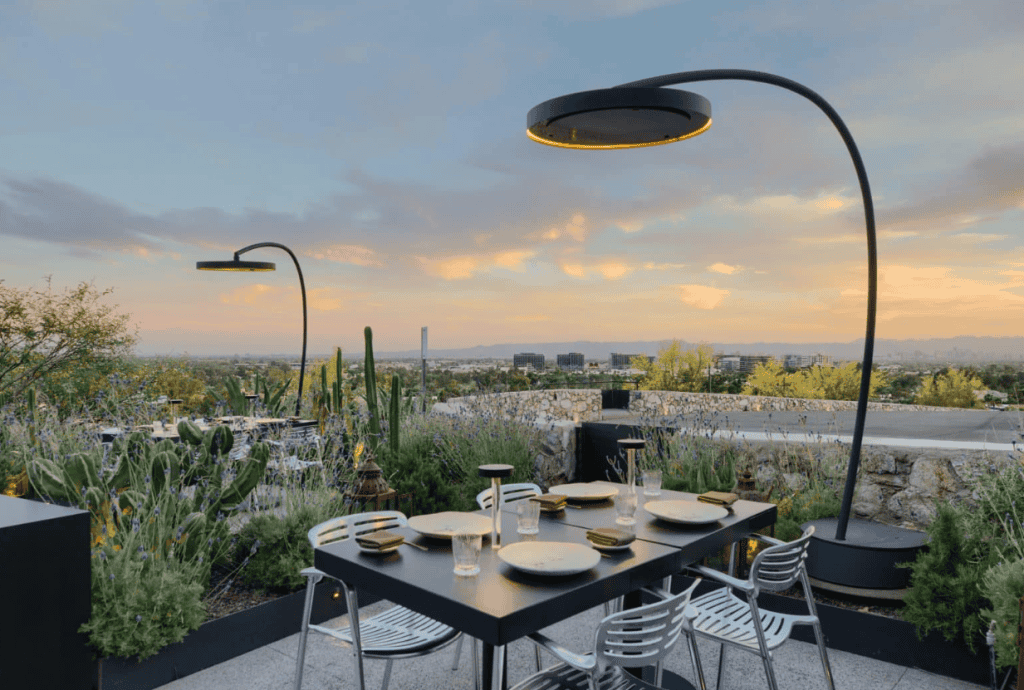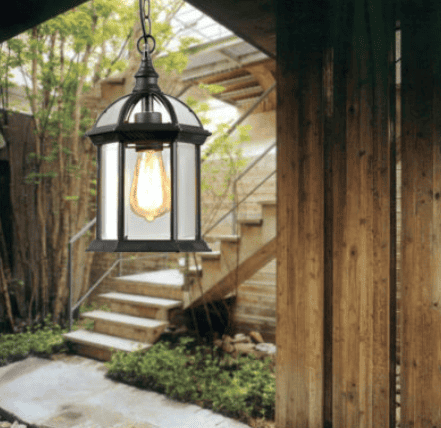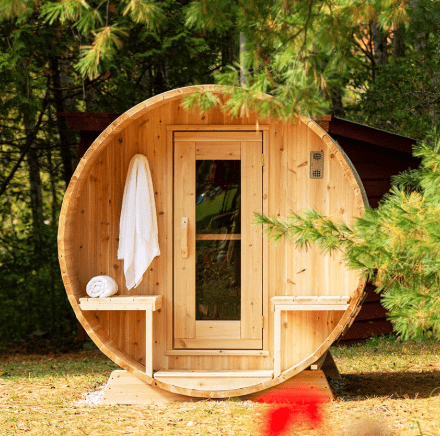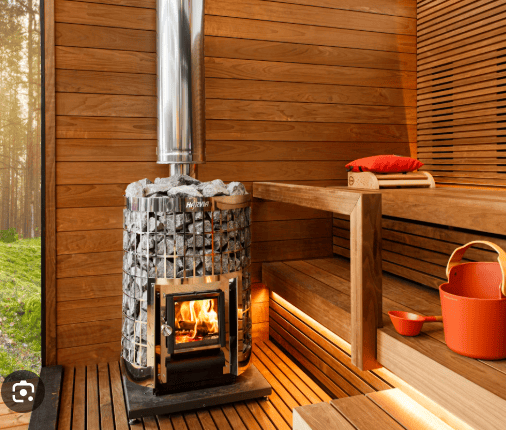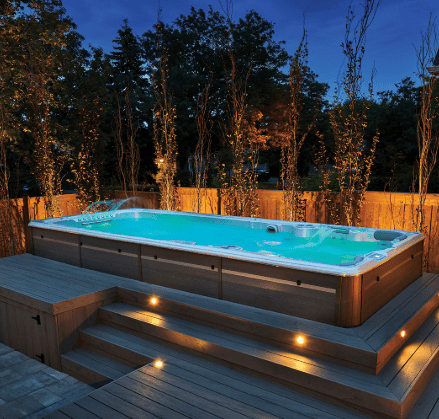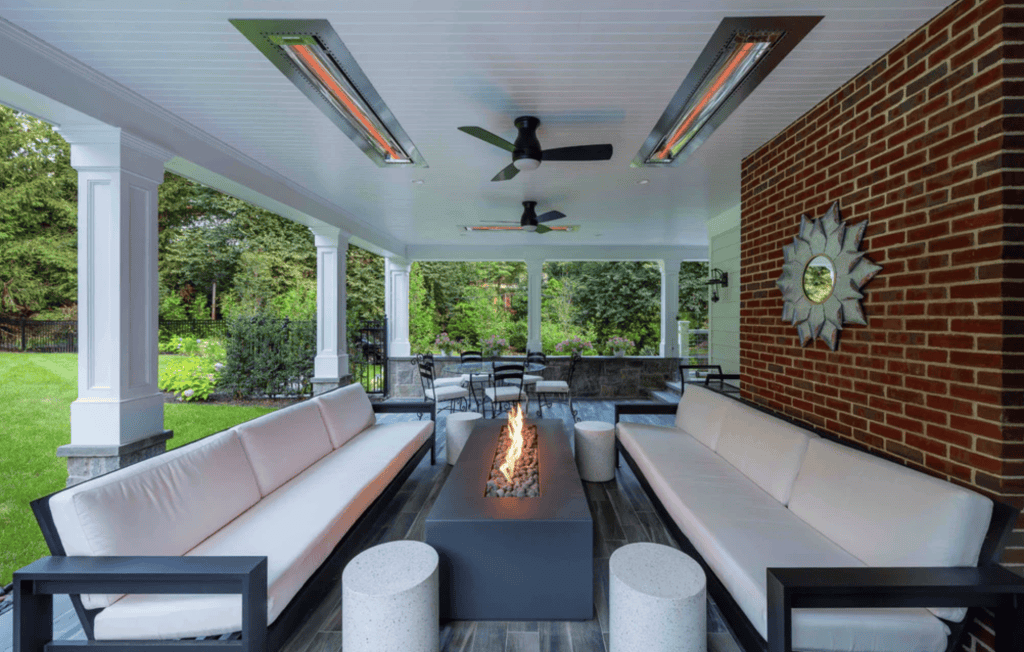Patio Heater
Patio Heater on Covered Patio: Where to Put Your Outdoor Heater?
This guide will help you navigate the options and choose the right patio heater for your outdoor space, ensuring peace of mind.
As the evenings get cooler, extending the enjoyment of your outdoor space becomes a priority. A patio heater can be a game-changer, allowing you to comfortably use your patio even under a covered patio. But with various types of heaters available, understanding the nuances of placement and safety is essential. This guide will help you navigate the options and choose the right patio heater for your outdoor space, ensuring both warmth and peace of mind.
Understanding Patio Heaters
Types of Patio Heaters: Electric vs. Gas
When considering a patio heater for your outdoor patio, the primary choice often boils down to electric or gas. Understanding these differences is crucial in selecting the type of patio heater that best suits your patio space and needs.
| Heater Type | Fuel Source |
|---|---|
| Electric | Electrical outlet (typically uses infrared technology) |
| Gas | Propane tank (propane patio heater) or gas line (natural gas heater) |
Benefits of Using a Patio Heater
The benefits of using a patio heater extend far beyond simply providing warmth. An outdoor heater allows you to extend the use of your patio space well into the cooler months, making your outdoor patio a more inviting and functional area year-round. Whether it’s for entertaining guests or simply enjoying a quiet evening, a heater can create a comfortable and welcoming atmosphere. With the right patio heater, you can maximize your outdoor living experience and enjoy your patio to the fullest.
Choosing the Best Patio Heater for Your Outdoor Space
Selecting the best patio heaters for your outdoor space involves considering several factors. First, assess the size and layout of your patio. Consider wall mount options or freestanding models to optimize space and ensure heater safety. Ultimately, the right patio heater will depend on your specific needs and the unique characteristics of your outdoor space.
| Heater Type | Key Consideration |
|---|---|
| Covered Patio | Clearance Requirements |
| Electric Heater | Ease of Use |
| Gas Heater | Higher Heat Output |
Using a Patio Heater under a Covered Patio

Can You Use a Patio Heater Under a Covered Patio?
The question of whether you can use a patio heater under a covered patio is a common one, and the answer depends on several factors. Many models of both gas and electric heaters are designed for outdoor use, but using a patio heater under a covered patio requires careful consideration of ventilation and clearance requirements. Generally, if the covered patio is sufficiently open and well-ventilated, using a patio heater is possible. However, enclosed or partially enclosed spaces can pose a safety risk due to the potential buildup of carbon monoxide from a gas heater or overheating from an electric heater. Always consult the manufacturer’s instructions for heater safety guidelines.
Patio Heater Safety: What You Need to Know
Heater safety is paramount when using a patio heater, especially under a covered patio. Ensure there is adequate ventilation to prevent the accumulation of harmful gases when you use an outdoor heater. Regularly inspect your patio heater for any signs of damage, such as cracks or leaks, particularly if it’s a gas patio heater. Keep flammable materials away from the heater to minimize the risk of fire. Always follow the manufacturer’s recommendations for safe operation and maintenance. Additionally, consider models with built-in safety features, such as tip-over switches and oxygen depletion sensors, to enhance safety when you use your patio heater.
Clearance Requirements for Patio Heaters
Clearance requirements are a critical aspect of patio heater safety, especially when using a heater under a covered patio. Patio heaters don’t work well if they are placed too close to ceilings, walls, or other objects. Ensure there is sufficient vertical and horizontal clearance from the best patio heater to any combustible materials. Consult the manufacturer’s specifications for the minimum clearance requirements for the specific type of patio heater you are using. Pay particular attention to overhead clearance, as the heat from the patio can damage or ignite low-hanging structures. Adhering to these clearance requirements will help prevent accidents and ensure that using a patio heater remains a safe and enjoyable experience when you put a patio heater.
Placement of Patio Heaters
Best Locations to Put a Patio Heater
When determining the best locations to put a patio heater, especially an outdoor heater under a covered patio, several factors come into play. Firstly, consider the layout of your patio space. If you’re using a gas heater, ensure it’s placed in a well-ventilated area to prevent the buildup of harmful gases. For an electric patio heater, proximity to an electrical outlet is key. The goal is to maximize the heater’s effectiveness while maintaining safe clearances from furniture, walls, and any overhead coverings. Freestanding models offer flexibility, while wall mount heaters save space and provide targeted warmth to a specific zone of your patio.
Safety Features to Consider When Placing Your Heater
Heater safety is paramount when deciding where to put a patio heater. Ensure that the chosen location allows for ample clearance between the outdoor heater and any combustible materials. If you use your patio heater, models with tip-over switches are essential, as they automatically shut off the heater if it’s accidentally knocked over. For gas heater options, carbon monoxide detectors are a must, especially under a covered patio, to alert you to any gas leaks or buildup. Always prioritize safety by following the manufacturer’s guidelines for the type of heater you’re using, whether it’s electric, gas, or propane. These safety features greatly enhance your experience when you use your patio heater.
Optimizing Your Outdoor Space with Heater Placement
Optimizing your outdoor space involves strategically placing the right patio heater to maximize warmth and comfort. Consider the natural flow of your patio space and position the outdoor heater in a way that complements the layout. If you frequently entertain, placing the heater near seating areas will keep your guests cozy. For smaller patios, a wall mount heater can be a space-saving solution. Assess how the wind typically flows through your patio space, and position the heater to minimize heat loss. By carefully considering these factors, you can create an inviting outdoor patio environment with the best patio heater to ensure the best use for everyone. By putting a patio heater where it will do the most good, you will expand your seasons.
Types of Patio Heaters Suitable for Covered Patios
Choosing Propane vs. Electric Patio Heaters
Choosing between propane and electric patio heaters involves considering several factors specific to your outdoor patio and needs. Propane heaters offer portability and higher heat output, making them suitable for larger, open spaces. However, they require refilling propane tanks and proper ventilation due to combustion gases.
| Heater Type | Characteristics |
|---|---|
| Electric | Cleaner, quieter, and require less maintenance. Ideal for smaller covered patio areas with easy access to electrical outlets. |
The choice ultimately depends on your preferences, patio space layout, and ventilation capabilities, whether you use a patio heater.
Best Patio Heaters for Covered Areas
When selecting the best patio heaters for covered areas, electric patio heaters often emerge as a top choice due to their safety and convenience. Infrared heater models are particularly effective, providing direct warmth without heating the surrounding air, making them energy-efficient. Wall mount heater options are excellent for saving space and directing heat where it’s needed most. Look for models with adjustable heat settings and built-in safety features such as overheat protection. These best patio heaters offer a safe and comfortable way to enjoy your outdoor patio under a covered space, ensuring you’ll want to use your patio heater frequently.
Natural Gas Patio Heaters: A Safe Option?
Natural gas heaters can be a safe and efficient option for heating your outdoor patio, provided certain precautions are taken. Unlike propane, natural gas connects directly to your home’s gas line, eliminating the need for propane tank refills. However, professional installation is crucial to ensure the gas line is properly connected and there are no leaks. Ventilation is essential, especially if using the heater under a covered patio, to prevent carbon monoxide buildup. Look for models with safety features like oxygen depletion sensors, which automatically shut off the heater if oxygen levels drop too low. With proper installation and maintenance, natural gas patio heaters can safely extend the use of your outdoor space, by making sure to put a patio heater in the right place.

